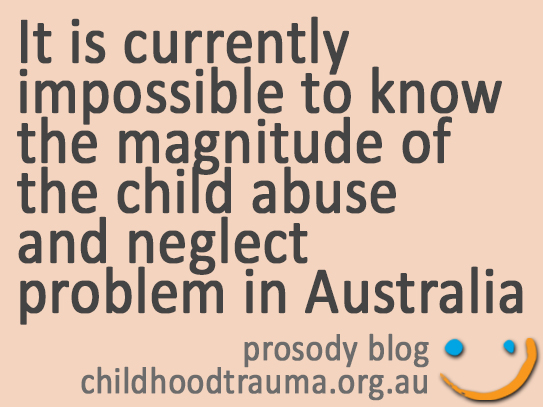
A public health approach to child protection: the need for data

This article was co-authored by Karen Broadley and Chris Goddard,
Child Abuse Prevention Research Australia, Monash University.
In Australia, many researchers and policy makers believe that statutory child protection systems are overburdened and ineffective. The way forward, they suggest, is a public health model of child protection (O’Donnell, Scott, & Stanley, 2008). Such a model consists of three service platforms – primary services (for all children), secondary services (for more vulnerable children and families), and statutory services (with responsibility for investigating allegations of child abuse and neglect).
It is generally accepted that a public health approach comprises four crucial steps.
- Collecting surveillance data
- Establishing causes and correlations
- Developing and evaluating interventions
- Disseminating information about the effectiveness of intervention activities to the public health community (Leeb, Paulozzi, Melanson, Simon, & Arias, 2008; World Health Organization, 2006)
However, in Australia there are no reliable surveillance data, in other words, no reliable data about ‘person’, ‘place’ and ‘time’ (Broadley, Goddard and Tucci, 2014, http://www.capra.monash.org/assets/files/theycountfornothing.pdf).
 There is no reliable information about ‘person’. For example, there is no information about the number of notifications where there is parental drug and alcohol misuse, mental illness, domestic violence, or disability. There is no information about the number of children and young people from culturally and linguistically diverse families notified to, or involved with child protection (Broadley, Goddard, & Tucci, 2014).
There is no reliable information about ‘person’. For example, there is no information about the number of notifications where there is parental drug and alcohol misuse, mental illness, domestic violence, or disability. There is no information about the number of children and young people from culturally and linguistically diverse families notified to, or involved with child protection (Broadley, Goddard, & Tucci, 2014).
Data are not comparable across ‘place’. This is because the states and territories have their own child protection legislation, definitions and data recording methods. For example, in 2011 – 2012 substantiations in relation to:
- sexual abuse ranged from 3% in the Northern Territory to 22% in Western Australia
- physical abuse ranged from 13% in the Australian Capital Territory to 29% in Victoria
- emotional abuse ranged from 27% in South Australia to 54% in Victoria
- neglect ranged from 7% in Victoria to 53% in the Northern Territory (Australian Institute of Health and Welfare, 2013, p. 59)
The degree to which these differences can be explained based on differences between jurisdictions is unknown.
 Data are not comparable over ‘time’. This is because many jurisdictions have introduced new data recording systems over recent years. For example, official figures state that in New South Wales there were:
Data are not comparable over ‘time’. This is because many jurisdictions have introduced new data recording systems over recent years. For example, official figures state that in New South Wales there were:
- 16,765 substantiations in 2002 – 2003
- 37,094 substantiations in 2006 – 2007
- 18,596 substantiations in 2010 – 2011
However it is also acknowledged that in New South Wales the “data are not comparable to previous years” (Australian Institute of Health and Welfare, 2011, p. 120).
The lack of reliable data about ‘person’, ‘place’ and ‘time’ hinders progress through the four vital steps.
- It is impossible to know the magnitude of the child abuse and neglect problem.
- There is limited ability to identify risk factors and risk populations.
- There is limited ability to evaluate prevention and intervention activities – because there is no real ability to measure effectiveness.
- Lack of data hinders development of an evidence base. Policy makers and those in the public health community have no reliable information to inform, evaluate and improve their work with vulnerable children and families.
If a public health approach to child protection is the answer to concerns that child protection systems are over burdened, it is essential to develop an effective child protection surveillance data system. This will ensure that services are located in areas and targeted towards populations in greatest need. It will enable large-scale evaluation of the effectiveness of prevention and intervention activities (http://www.capra.monash.org/).
References
>Take me to the Prosody home page for more blog entries!
